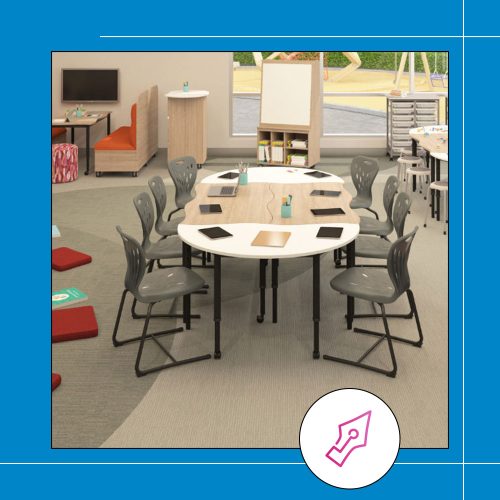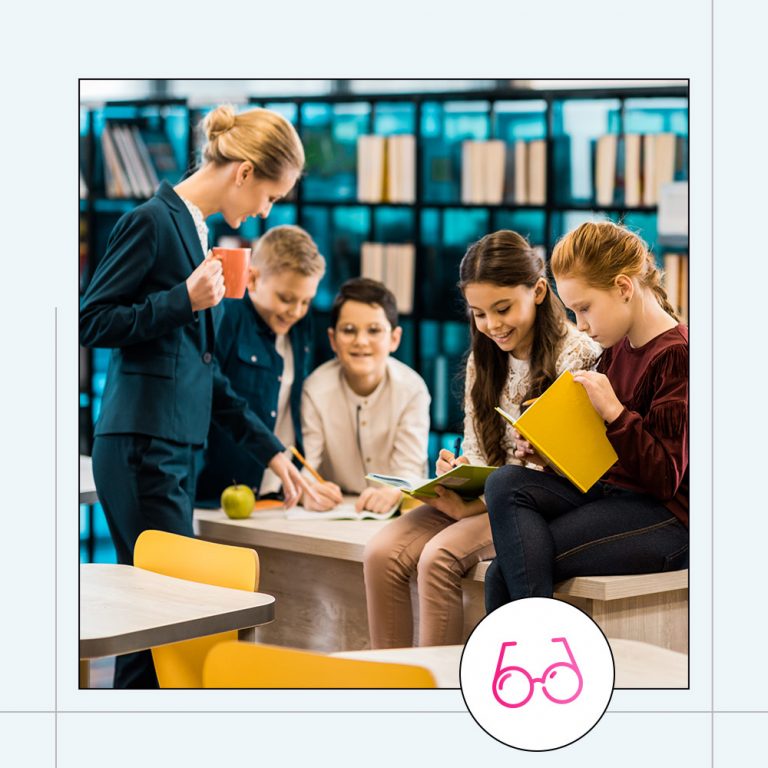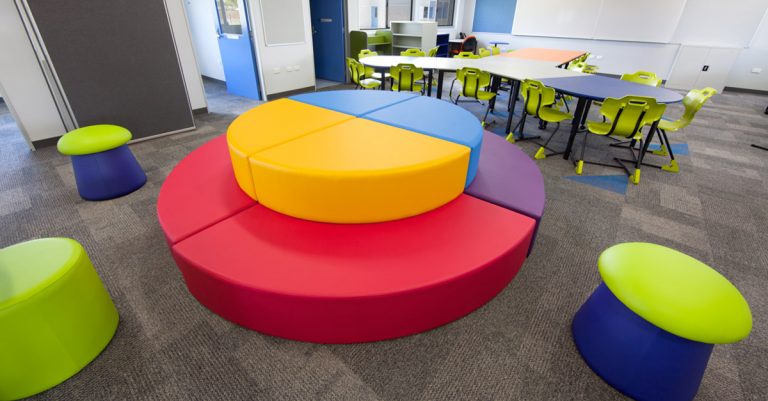Flexible seating in the classroom has become more and more popular over the years.
The traditional rows of static clunky desks are making way for revolutionary new furniture items that shake up the status quo and put a bounce, wiggle and splash of colour into the learning environment.
What is Flexible Seating?
In traditional classrooms, students are seated at individual desks or in groups at tables.
These furniture solutions may give them limited freedom to move around the room before the bell signals break time.
For the majority of the lesson, it is normal for students to stay in the same spot.
In a flexible seating environment, however, the classroom can be arranged in any number of ways and students can choose where they would like to work and learn.
For example, storytime may take place on the floor on rubber cushions that allow children to sit cross-legged, propped up on their elbows or however they feel the most comfortable. Projects involving groups of students may take place around a learning station complete with sofas and comfortable stools.
Bean bags, low tables, tray tables, exercise balls, wheeled chairs and standing desks are just some of the flexible seating options that are available.
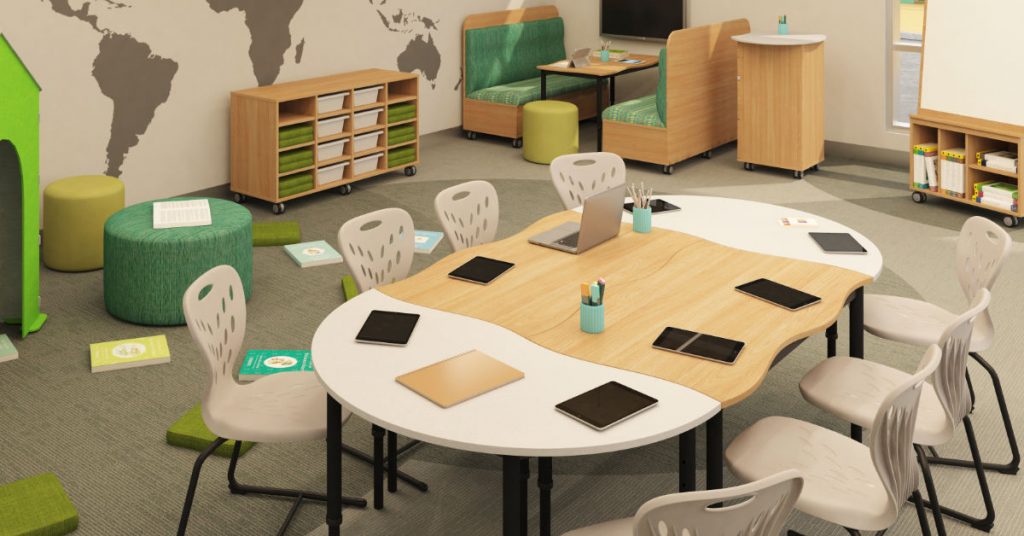
The Many Benefits of Flexible Classroom Seating
- Choice
Students often learn best when they have a degree of control over their learning environment. Flexible classroom seating allows children to choose where and how they want to sit and who they want to sit with. It also allows them to change their position or location as needed.
- Community
Traditional classroom desks can make students feel possessive or territorial over their space and belongings. Flexible seating, on the other hand, encourages children to be generous with their space and to share supplies. It also encourages them to take turns sitting in different areas and with different people.
- Sensory Input
There are many different flexible seating options that can stimulate students’ sense of touch. Much like fiddle toys, these seats can help children with ADHD, ADD and ASD to focus and process information more easily.
- Collaboration
Students learn better when they learn together. Traditional desks uniformly spaced out in rows can be restrictive and can isolate children from each other. Flexible seating allows children to work in small groups or to have a discussion as a whole class.
- Comfort
When a student is uncomfortable, they can become easily distracted and unproductive. Flexible seating allows students to find their ‘Goldilocks’ chair – the one that is just right for them. Comfortable students are focused, calm and productive.
- Movement
Children need to move. That’s no secret. But when children can’t move because they are seated in a restrictive setting or uncomfortable seating, they can become distracted, disruptive and unmotivated. Flexible seating allows children to lean, bounce, roll, fidget, wobble, stand, kneel and sit to suit their individual needs.
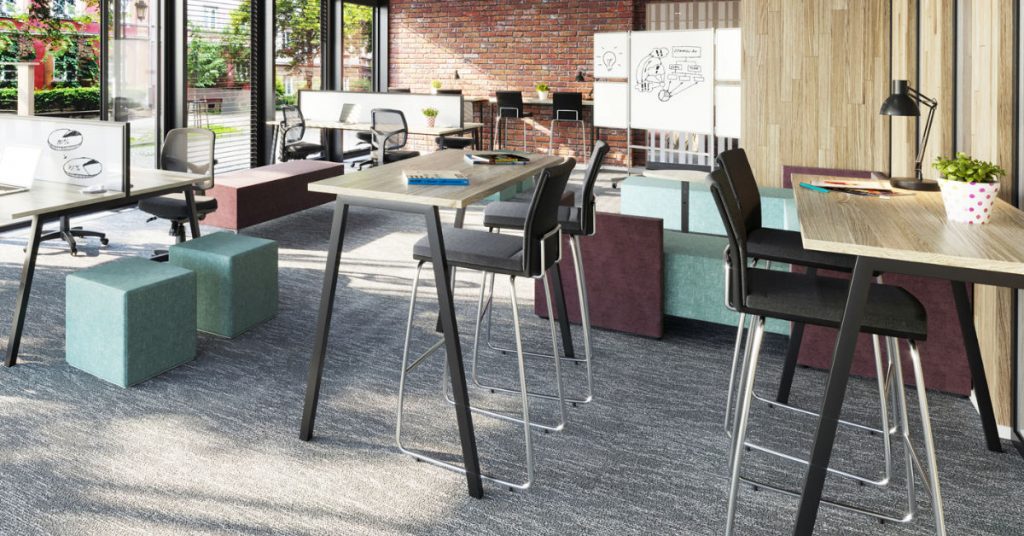
Busting Common Myths About Flexible Seating
Desks and conventional seating have been used in the classroom for decades.
Is there really a reason to change?
Won’t it cost a lot of money to do so?
Will wobbly and bouncy seats be seen as play equipment rather than furniture?
It’s important to question change but it’s also good to be armed with the facts and to dispel any myths so that you can make informed decisions with confidence.
Let’s take a look at some of the most common myths and questions about flexible seating so that you can do just that.
Flexible Seating Must Be Expensive - Can My School Afford It?
Although flexible seating can sometimes cost more than more traditional items of educational furniture, there are many affordable options that can suit all budgets.
However, most schools can get around this by raising money through grants, crowdfunding and donations from parents and the community.
I Don't Have Enough Room in My Classroom
This is a common concern among many education providers.
However, with the right approach, flexible seating can work in classrooms of any size. It might even open up your space in ways you didn’t imagine.
For example, stand-up desks have a smaller footprint than desks with chairs. You could also create a reading nook complete with low stools, cushions and rugs.
Think about flexible seating and furniture as a way to expand the learning opportunities for your students rather than simply items of furniture.
Won't Flexible Seating Overstimulate and Distract Students?
Plastic gaming rockers, rubber wiggle cushions, bean bags? Isn’t that a recipe for disaster? Won’t the children become overstimulated and distracted? Well…
When you first introduce flexible seating into the classroom, it’s only natural that your students will be excited and want to use it all.
What is it? Can I play on it? What happens when I do this?
Give them time to explore and let that excitement play out and then set down rules and boundaries around how you’d like them to use the furniture.
You might also want to keep a few items of traditional furniture in the classroom for those children who prefer it.
Isn't Flexible Seating Just Yoga Balls and Wobble Stools?
Yoga balls and wobble stools are just a fraction of what to expect when you start exploring the wonderful world of flexible seating.
In fact, flexible seating can include anything that doesn’t fit into the category of conventional school seating.
From portable lap desks that allow children to sit on a seat pad with a lap desk attached, to storytime cushions and modular seating, there is a wealth of flexible seating options just waiting to be discovered.
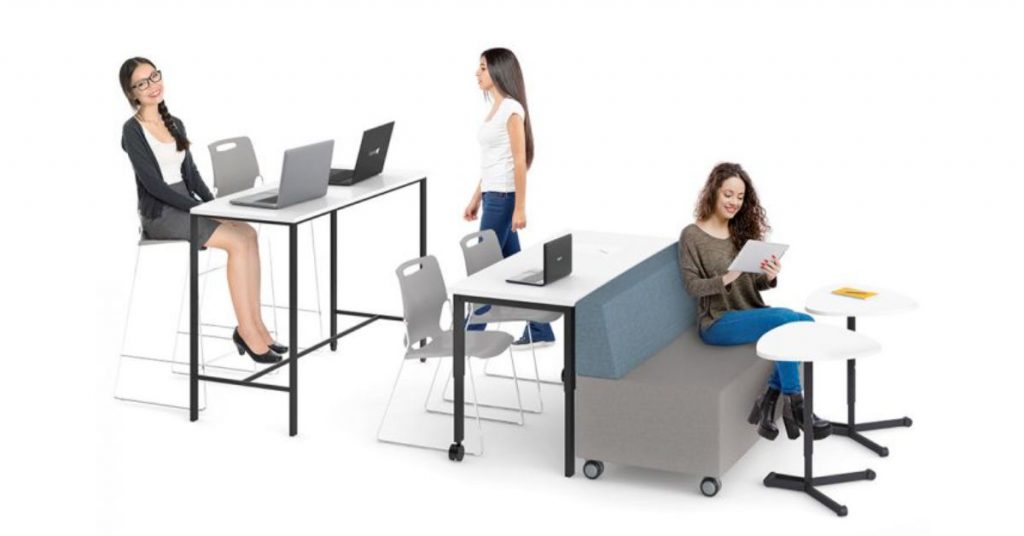
Tips For Making Flexible Classroom Seating a Success
Let’s face it, not many of us really like sitting in the same uncomfortable and boring seat all day.
Giving children a choice where they can sit and encouraging movement around the classroom helps students to gain respect for their environment and classmates, own the way they learn and realize that they can still achieve great things outside the confines of a desk and chair.
One of the primary objectives of flexible classroom seating is to increase active learning and to reduce long periods of being seated in the same position on the same furniture.
Think about the companies of the future.
We are already seeing a shift in traditional workplace settings with highly successful companies like Amazon and Google leading the way with their flexible and innovative office spaces.
Flexible seating is a great way to prepare students for life in the real world after school.
Here are some tips for making your flexible classroom seating a success:
Start Small
The best way to start introducing flexible seating solutions is to start small.
Begin with one area at a time and get your students used to the rules and procedures for using that area before introducing new seating or furnishings.
Remember, you may not need to pay out of school funds for your furniture. Look into grants and other fundraising options that help you to fund your transformation.
Play Goldilocks
As the classic fairy-tale goes, what was right for the bears wasn’t always quite right for Goldilocks. Let the children try out different seating styles to see what works best for them.
Recycle Existing Furniture
You don’t have to buy new flexible seating and furnishings to experience the benefits. Take the legs off of stools and tables, paint desktops with chalkboard paint, create reading nooks filled with rugs and cushions.
Pinterest and Instagram are treasure troves of ideas when it comes to creating your own flexible learning spaces.
Deploy Standard Operating Procedures
You might not think it necessary to teach a child how to sit properly on a chair or to use a piece of furniture suitably, but when you introduce flexible seating you may need to go back to basics.
Show children how to use the furniture, to move safely from place to place, to respect others and to move furniture safety if they want to create a group learning zone.
Preach your expectations and practice these rules frequently.
Final Thoughts
It’s only when you investigate flexible classroom seating that you realize how many possibilities it has to offer.
Traditional seating has its place, such as exam time when more formal seating is required, but it is flexible seating that can create a dynamic, fun and inspiring learning environment.
What’s more, your students will thank you for providing a space that encourages movement and freedom of choice and which supports the needs of ALL students.


